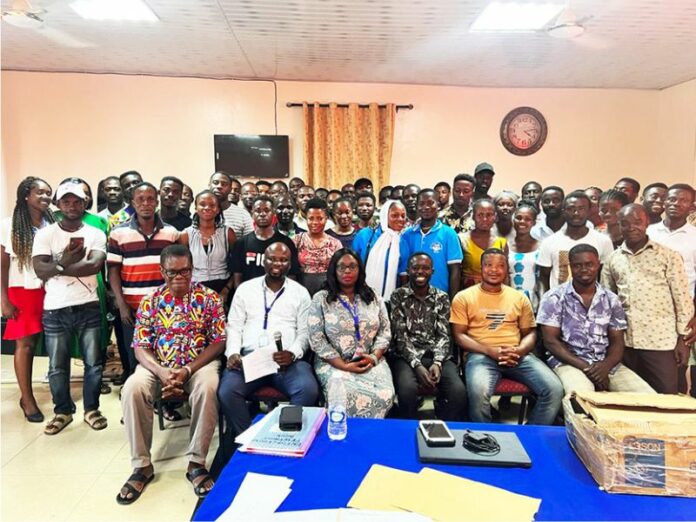The Food and Drugs Authority (FDA), Eastern Region, has organised a training programme on good manufacturing practices for water manufacturers at Akim Oda, in the Birim Central Municipality.
The 85 packaged water manufacturers present at the event were from about 28 sachet water manufacturing companies in the Birim South, North, and Central municipalities.
Madam Anita Owusu-Kuffour, Eastern Regional Acting Head of FDA, said once water was drawn from the source, it must be properly sanitized, and to guarantee the cleanliness of the water, manufacturers must go through quality assurance processes.
Some key aspects the FDA took participants through were process documentation in their daily operations, filtration, Ultraviolet (UV) light sanitizer, and the overview of the Public Health Act 2012 (Act 851).Madam Owusu-Kuffour emphasised the importance of public health in ensuring that everyone was aware of health risks through educational and sensitization programmes.
The Act establishes the Food and Drugs Authority and requires registration of food intended to be made, placed on the market, imported, or exported, as well as food exporters and importers.
Speaking about the filtering procedure, Mr. Joseph Gyau Yeboah, Senior Regulatory Officer at the FDA Enforcement Unit in Koforidua, stated that the clean water was passed through filters with varying pore sizes and materials. These filters remove dissolved particles and germs.
He recommended the use of Reverse Osmosis (RO) water filter for packaged water makers, saying that it was used to remove a great deal of pollutants from water by forcing the water under pressure through a semi-permeable membrane.
He said that the RO system’s energy consumption was relatively low compared to other similar systems, and that the water obtained from a RO was free of germs that might cause illnesses.
According to Madam Kate Gyimaa Asante, Regulatory Officer of FDA, Koforidua, the ultraviolet light sanitiser breaks down and inactivates water-borne microorganisms, rendering them unable to reproduce.
She emphasised its benefits of being cost-effective, having no change or odour, being environmentally friendly, and having no disinfection of by-products.
The training curriculum was interactive for both participants and FDA staff.
GNA










